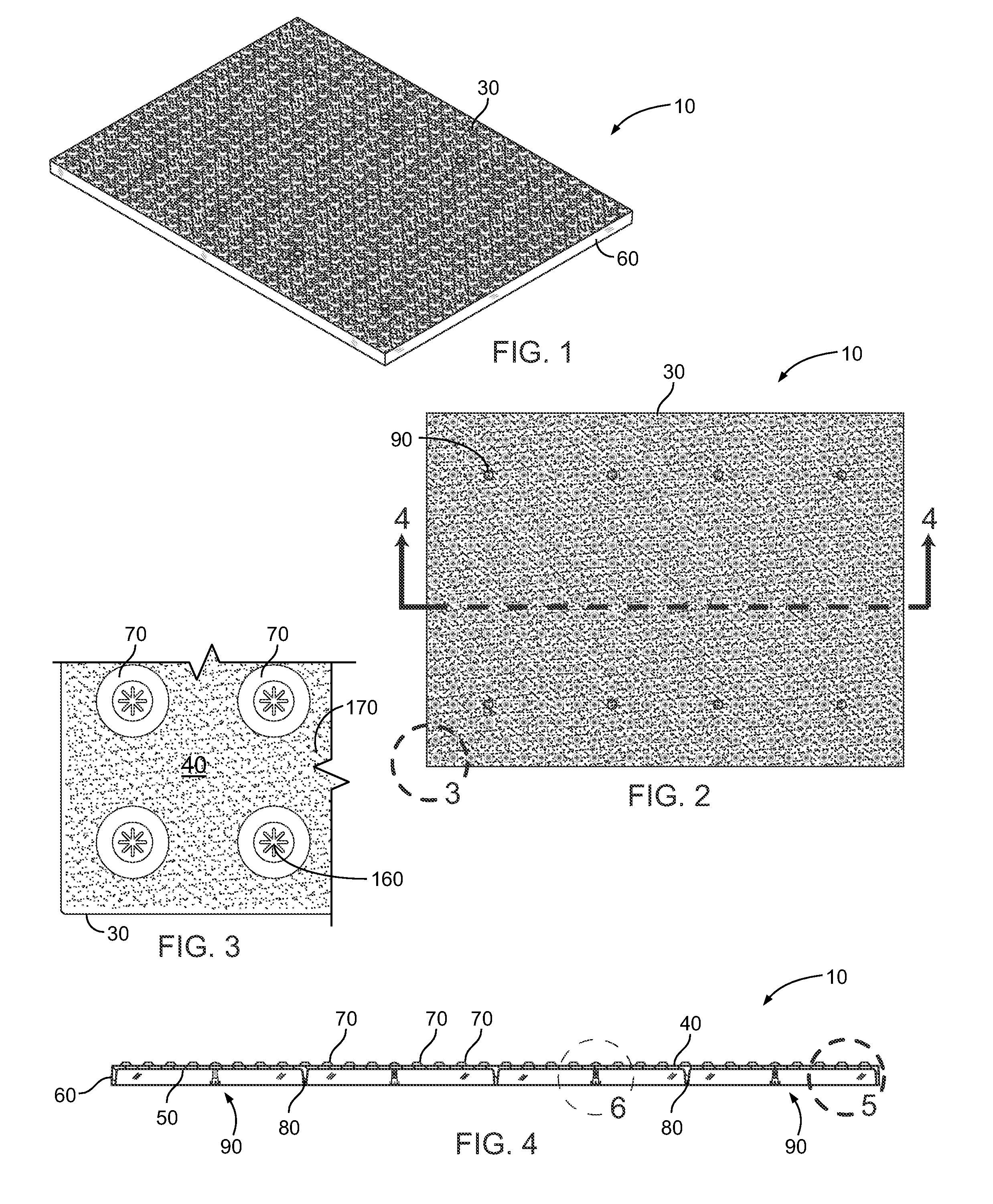Safety Tile for Pedestrian Tactile Detection
a safety tile and tactile detection technology, applied in the field of embedded sidewalk tiles, can solve the problems of the bottom surface of the tile falling off the device has the drawback, and the installation of the cement embedment material, etc., to facilitate the unscrewing of the threaded shaft, easy installation, and low manufacturing cost.
- Summary
- Abstract
- Description
- Claims
- Application Information
AI Technical Summary
Benefits of technology
Problems solved by technology
Method used
Image
Examples
Embodiment Construction
[0031]FIG. 1 illustrates a safety tile 10 for embedding into a pedestrian-accessible surface 20 (FIG. 5B), such as a sidewalk or a train platform. The safety tile 10 comprises a substantially planar tile member 30 that includes an upper surface 40, a lower surface 50, and at least one side surface 60. The upper surface 40 includes a plurality of projections 70 extending upwardly therefrom, while the lower surface 50 includes a plurality of downwardly projecting ribs 80 (FIGS. 4, 5, and 8). The downwardly projecting ribs 80 together form a plurality of generally rectangular compartments 105 on the lower surface 50 (FIG. 8).
[0032] The tile 10 is preferably formed with a strong, rigid, and durable material such as polymer concrete. Further, the tile 10 may be dyed a bright color to contrast with dark surface materials such as asphalt, or a dark color to contrast with light surface materials such as concrete. As such, visually impaired persons may more easily detect the presence of the...
PUM
 Login to View More
Login to View More Abstract
Description
Claims
Application Information
 Login to View More
Login to View More - R&D
- Intellectual Property
- Life Sciences
- Materials
- Tech Scout
- Unparalleled Data Quality
- Higher Quality Content
- 60% Fewer Hallucinations
Browse by: Latest US Patents, China's latest patents, Technical Efficacy Thesaurus, Application Domain, Technology Topic, Popular Technical Reports.
© 2025 PatSnap. All rights reserved.Legal|Privacy policy|Modern Slavery Act Transparency Statement|Sitemap|About US| Contact US: help@patsnap.com



